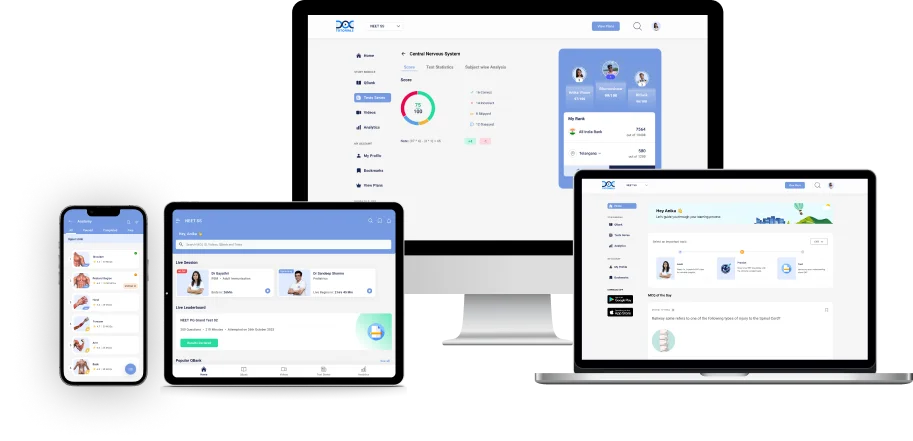Pre-Anaesthetic Checkup (PAC): Importance, Procedure, and Tests

People often feel anxious about surgery or medical procedures. Understanding the preparation involved can help ease this stress. One essential step is the pre-anaesthetic checkup (PAC), which ensures the patient is ready for anaesthesia and surgery.
The PAC full form in medical terms is “Pre-Anaesthetic Check Up,” and it plays a vital role in safe surgical care. This medical evaluation allows the anaesthesia team to assess the health, prepare for any possible complications, and guide the patient through the type of anaesthesia they’ll receive.
Additionally, PAC helps mitigate risks and enhance recovery by thoroughly checking everything in advance. Please keep reading to understand how a pre-anaesthetic checkup is done and why it’s crucial before any procedure.
What is a Pre-Anaesthetic Check Up?
When the doctor schedules surgery or an interventional procedure, the patients will need some form of anaesthesia. Depending on their needs, they might receive general anaesthesia, regional anaesthesia, or monitored anaesthesia care (MAC).
A pre-anaesthesia checkup is an essential step that helps the medical team choose the most suitable type of anaesthesia. During the checkup, the team reviews the patient’s medical history, assesses their current health, and checks their ongoing medications.
They also use this information to plan anaesthesia and ensure the procedure’s safety. This is where the PAC in medical practice becomes integral to patient care.
How is a Pre-Anaesthetic Check Up (PAC) Performed?
The main purpose of the PAC is to make sure the patient is physically ready for surgery and to minimise risks. Here’s how doctors usually conduct the process:
- Step 1: They guide the patient to the PAC room, which is usually located in the outpatient department.
- Step 2: An anaesthesia doctor discusses the medical history, allergies, and previous surgeries.
- Step 3: The doctor performs a physical check-up and records the patient’s significant signs, such as heart rate, blood pressure, and oxygen levels.
- Step 4: The patient must provide a list of current medications, including their names and doses, so that the team can manage them properly.
- Step 5: The doctor refers them to a specialist if they detect any existing health issues that generally require treatment before surgery.
- Step 6: Depending on their surgery, they also arrange blood tests or scans if necessary. These are an integral part of the standard PAC test list.
- Step 7: The anaesthetist explains the anaesthesia plan and pain management strategy and informs the patient about possible ICU needs.
- Step 8: The medical team explains the risks, and the patient signs a consent form to confirm their understanding.
Why is a Pre-Anaesthetic Check Important?
A PAC can save lives by revealing hidden health issues. For example, a man set for minor surgery was diagnosed with a heart problem during his PAC and received timely care. Another case involved a child scheduled for tonsil surgery. Doctors discovered thyroid issues during the checkup, which they treated in time.
The PAC test full form is the “Pre-Anaesthetic Check Up Test.” It generally includes simple yet powerful diagnostics such as ECGs (electrocardiogram) and blood tests that help doctors avoid complications. The test also guides the anaesthetist in planning a safe procedure and a comfortable recovery for the patient.
What are the Tests and Evaluations in a Pre-Anaesthetic Check Up?
Doctors generally perform several important tests during a pre-anaesthetic check-up to ensure they understand your health completely and choose the best anaesthesia method for the patient:
- They check the airway by asking the patient to move their head and open their mouth. This helps them plan how to insert a breathing tube if needed.
- They assess their lungs, especially if they have asthma, sleep apnoea, or a smoking history. A chest X-ray usually gives a clear view of the lungs.
- They evaluate heart health by checking their ability to handle physical stress. If needed, they conduct an ECG or echocardiogram.
- They review their joint and mobility status. If they have stiffness, they plan the best position for the patient during surgery to avoid discomfort.
These tests together form the basis of the PAC test, which gives doctors a complete picture of their readiness.
What are the Important Guidelines to Consider Before a Pre-Anaesthesia Checkup and Surgery?
Taking a few simple steps before PAC and surgery helps doctors give the safest care. It is essential to follow these important guidelines to stay safe and ready:
- Avoid solid food for 6 to 8 hours before the operation. The patient may drink a small amount of water up to 2 hours before. Babies can be breastfed up to 4 hours before surgery, while formula milk is allowed up to 6 hours.
- The patients should bathe the night before the surgery and again on the scheduled day. However, do not shave the surgical area, as hospital staff will handle that.
- Quit smoking as soon as surgery is planned. Smoking increases anaesthesia risks and slows recovery.
- If the patient takes blood-thinning medication like aspirin or clopidogrel, they should inform their doctor immediately. The doctor will advise if they need to pause the medication.
- Remove nail polish or artificial nails from at least one finger on each hand. This allows accurate oxygen monitoring.
- If the patient wears glasses, lenses, or hearing aids, they must bring them, along with their cases.
- Remove dentures or removable dental pieces before surgery.
FAQs About Pre-Anaesthetic Checkup (PAC)
- How long does PAC clearance take?
Doctors usually complete PAC in a few days. If the patient has existing conditions, it may take longer.
- Should I fast before the PAC visit?
No, the patient can eat and drink normally before their pre-anaesthesia checkup appointment.
- What should I tell my anaesthesia doctor?
The patient must share their complete medical and lifestyle history, including alcohol use, smoking, past surgeries, sleep issues, or problems with anaesthesia.
- Do I need to bring my medical records?
Yes, it is required to constantly bring records related to past surgeries, tests, and treatments.
- Should I carry my current medications?
The patient must show all their medicines—including tablets, syrups, or inhalers—to help the doctor make informed decisions.
Conclusion
A pre-anaesthetic checkup (PAC) is one of the safest and most important steps before surgery. It allows doctors to understand the health, detect symptoms early, and prepare the safest anaesthesia plan.
PAC is an essential topic for NEET PG aspirants. DocTutorials’ NEET PG study materials, top-grade video lectures, QRP (Quick Revision Programs), etc., can help you learn more about pre-anaesthetic checkup, how it is performed, and other vital details.
Want to secure top rank in NEET PG? Enrol in our NEET PG course today!
Latest Blogs
-

NEET PG Exam 2025- Date, Pattern, Marking Scheme, Subject Wise Weightage, and Exam Mode
NEET PG Exam 2025 is the ultimate gateway for medical graduates aspiring to pursue postgraduate courses in medicine, including MD,…
-

INI CET Exam 2025: Your Roadmap to Success – Key Topics, Strategies, and Lessons from Last Year’s Papers
The INI CET exam is more than just a test; it’s a significant milestone for many medical students aiming to…
-

INI CET Exam Success: Previous Year Question Papers & Ultimate Guide – INI CET PYQ
One can feel overwhelmed while preparing for the INI CET (Institute of National Importance Combined Entrance Test). A vast syllabus,…




